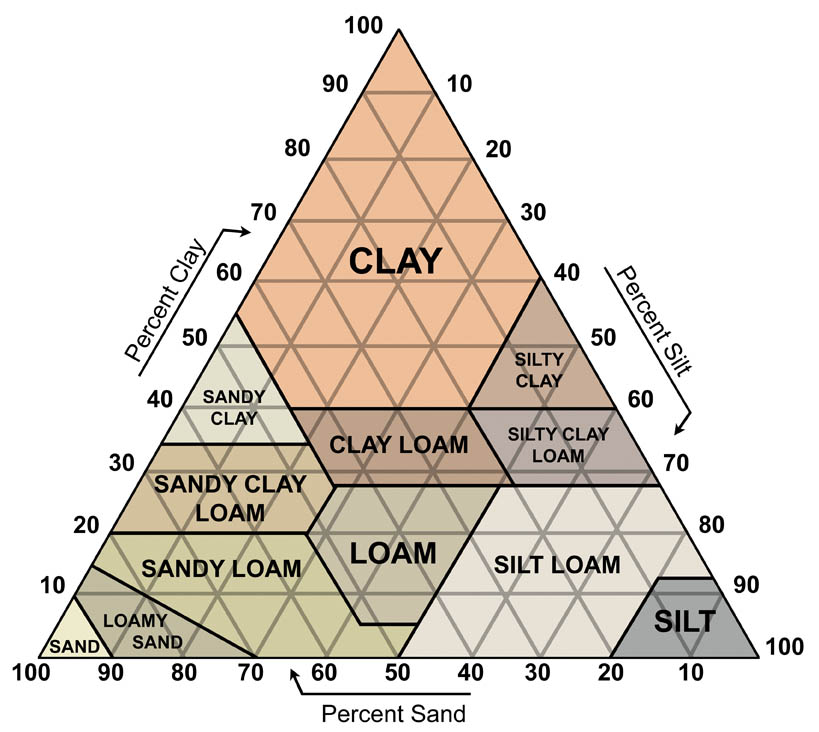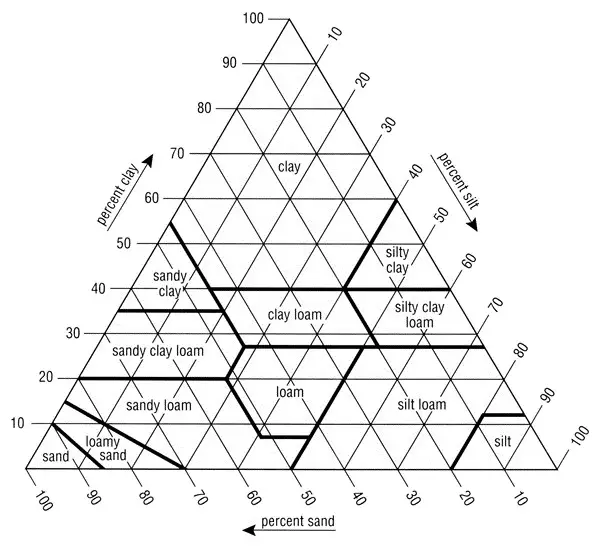Soil Texture Triangle Worksheet Pdf The soil texture triangle is used to determine the name of the soil texture There are 12 soil textural classes This triangle is used so terms like clay or loam always have the same meaning Each texture corresponds to specific percentages of sand silt or clay
The soil texture triangle is one of the tools that soil scientists use to visualize and understand the meaning of soil texture names The textural triangle is a diagram which shows how each of these 12 textures is classified based on the percent of sand silt and clay in each Note these percentages are based on the USDA definition of sand THE SOIL TEXTURAL TRIANGLE PRACTICE NOTES The term Loam simply refers to soils that have some type of mixture of sand silt and clay How to read a Soil Triangle http www youtube watch v bAYzoVliNFQ The SAND axis reads from the bottom right to left The SILT axis reads from the right side right to left
Soil Texture Triangle Worksheet Pdf

Soil Texture Triangle Worksheet Pdf
https://oercommons.s3.amazonaws.com/media/courseware/lesson/image/Soil-Texture-Triangle_800pxw_p31US9v.jpg

Solved 620Soil 20Activity pdf Soil Texture Triangle Activity Chegg
https://media.cheggcdn.com/study/9b2/9b2ff104-b1cc-40d9-be1a-1877ae3ad23f/image.png

Soil Triangle
http://www.infohow.org/wp-content/uploads/2012/11/Soil-Triangle.jpg
The soil texture triangle helps you identify your soil s texture class Different soil textures have different characteristics that affect drainage water retention and nutrient availability Knowing your soil texture allows you to tailor your gardening practices for optimal plant growth Oct 20 2015 nbsp 0183 32 Soil Texture Triangle To find the texture of your soil read percentages of sand silt and clay in the direction of the arrows at the sides For example a soil with 20 clay and 40 each of sand and silt is a loam
Using the Soil Textural Triangle Approximately 45 minutes Objectives By the end of the lesson students will know or be able to Use the soil textural triangle to distinguish between different types of soil Materials Soil Textural Triangle Guided Notes Page per student Guided Practice Page The soil textural triangle practice notes Directions Using your soil texture chart and example determine the following soil textures using the percentages given
More picture related to Soil Texture Triangle Worksheet Pdf

How To Use The Soil Texture Triangle
https://www.had2know.org/images/soil-texture-triangle.png

Environmental Science Lab Example Lab 5 Soil Part 1 Soil Textural
https://d20ohkaloyme4g.cloudfront.net/img/document_thumbnails/9bd704cec399bef816aceb6496d0db11/thumb_1200_1553.png

Soil Texture Triangle Activity
https://media.cheggcdn.com/study/fee/fee45774-1765-4f76-abc7-5c5d788be5c7/image.png
Directions Using your soil texture chart and example determine the following soil textures using the percentages given sand silt clay Soil Texture This document contains instructions and worksheets for determining soil texture using a soil textural triangle The triangle shows the percentages of sand silt and clay that define different soil textures
Use soil triangle to find type of soil from the percent of sand silt and clay found in the soil samples Students will work with soil textures to decide what their capacities are for plant growth Identify and locate geometric shapes and patterns within the soil triangle Soil Texture Triangle worksheet Free download as PDF File pdf or read online for free

How To Use The Soil Texture Triangle
https://static.wixstatic.com/media/95c60f_7d6ee61add4440d6ad9cd438958be5b7~mv2.jpg/v1/fill/w_980,h_1025,al_c,q_85,usm_0.66_1.00_0.01,enc_auto/95c60f_7d6ee61add4440d6ad9cd438958be5b7~mv2.jpg

Exploring Soil Texture
https://uploads-ssl.webflow.com/5aba7a7fa721b53b7ef54b23/5afdfd92e4987234cb7a2e44_Soil-texture-triangle.jpg
Soil Texture Triangle Worksheet Pdf - The soil textural triangle practice notes Directions Using your soil texture chart and example determine the following soil textures using the percentages given